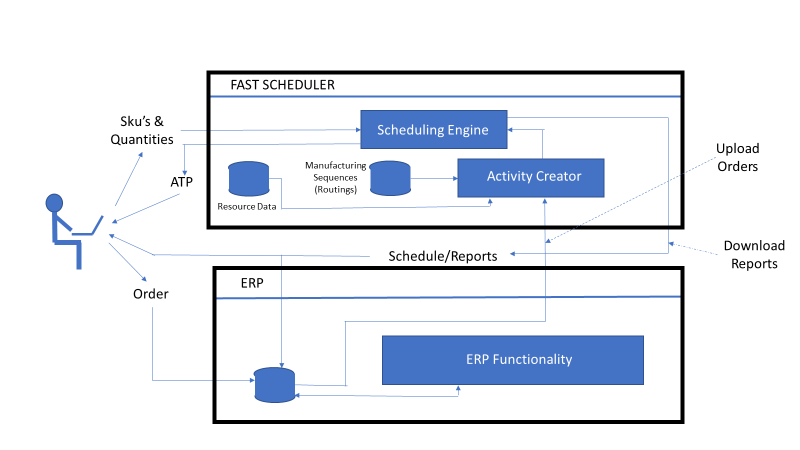I’ve written a lot about Enterprise Resource Planning (ERP) systems. And I’m guessing that if you’ve come this far in the blog, we’re in agreement on their benefits to an efficient organization.
So let’s take it one step further. In a previous post, I advocated embedding a high-quality scheduler into an ERP system .
Some ERP systems have their own finite capacity schedulers, but many have either no production scheduling or have schedulers with limited modelling capabilities. Manufacturers and Project Managers are left to schedule their shop floors or their work sites using other methods. Often these other methods are manual, with whiteboards or spreadsheets.
What if you’re using an ERP system but not its production scheduler? Or what if that ERP system doesn’t even have a real shop floor scheduler app in it? To retain the benefits of the ERP system and add the benefits of a good shop floor scheduler, an interface between the two applications is a possible solution.
The interface between a high-quality production scheduler and an ERP system is not as complicated as it might seem at first look. Consider the diagram below.
After a little analysis, you notice that there are essentially only two high frequency data flows. One transports orders from the ERP system to the scheduler. The other transfers schedules back to the ERP system. Other information such as product data, production sequences, and the resource capacities exist and may (or may not) be in the ERP system, but these data elements are loaded initially and edited occasionally. They are not transferred as day-to-day operations occur.
The data interfaces can be broken down into two types: highly interactive or “dynamic” data, and background data that is “semi-static.” Because of this distinction, it’s best to build the interface for transferring an order to the scheduler first and then the interface for transferring a completed schedule back to the ERP system. Most schedulers and ERP systems make this relatively easy.
So, don’t live with an ERP system that doesn’t meet your needs for a good scheduler. You can have the best of both! Need help? I’m happy to shed some light on any tricky real-world scheduling scenario.

